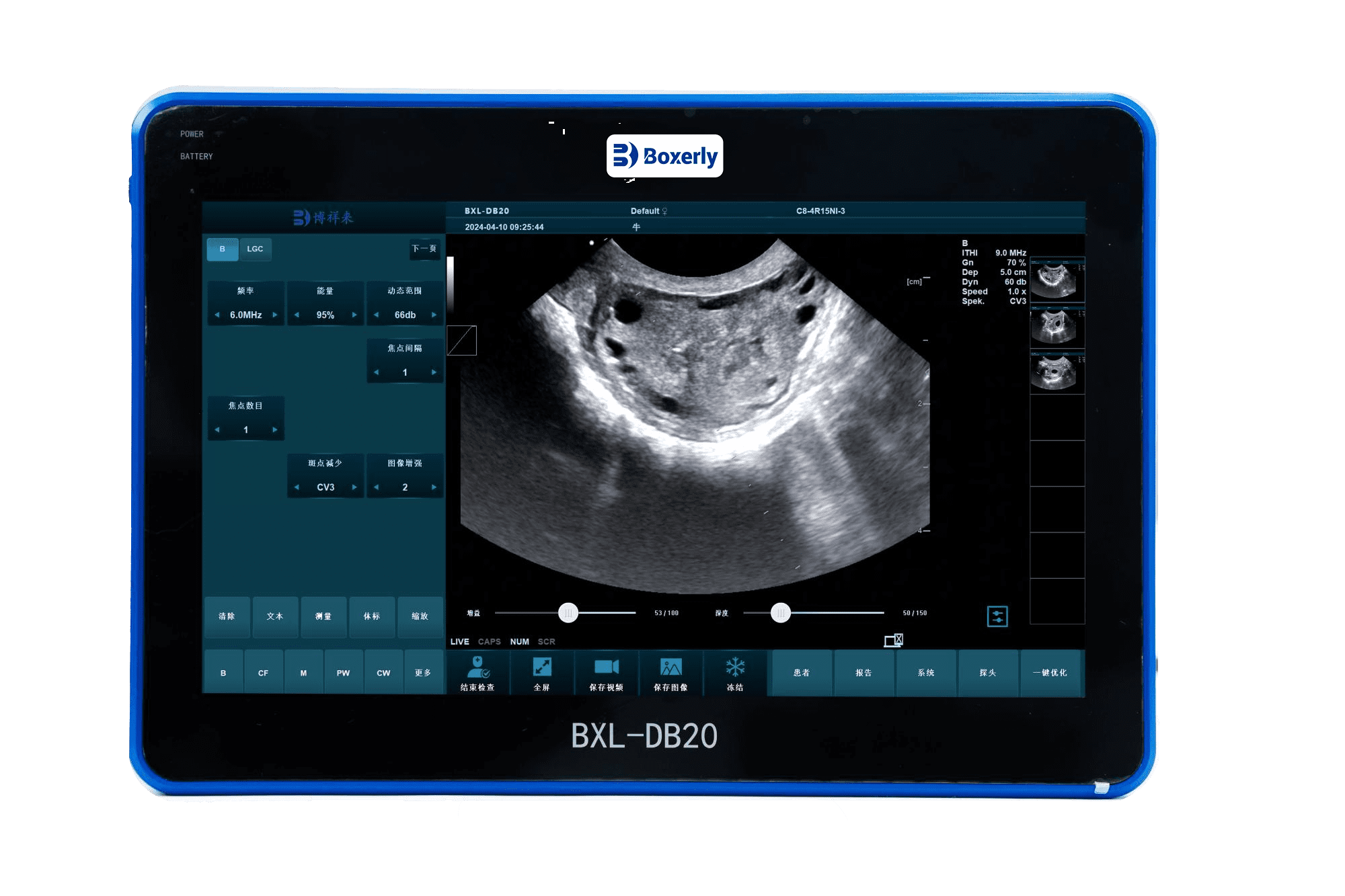The B-ultrasound machine for cattle has been used to diagnose a large number of early pregnancy and infertility cows through the rectal passage. At the same time, it was also found that some technicians had some problems in using portable B-ultrasound machines for cattle to examine dairy cows. In view of this, we summarize the problems and precautions in the operation as follows for the reference of relevant technicians.

Problems and solutions in the operation of B-ultrasound machines for cattle
1.1 Unskilled rectal examination technology and insufficient grasp of details. In the operation, rectal examinations were performed by cows and humans in the past, but now there is an ultrasound machine. Humans, cows, and B-ultrasound must be integrated and coordinated to operate well, work efficiently, and achieve practical results. For operators, higher requirements are placed on relevant theoretical knowledge and higher challenges are also placed on clinical practice technology. Our experience is that in the operation and diagnosis of dairy cows, certain basic knowledge of dairy cow gross anatomy (especially local cross-sectional anatomy), dairy cow physiological behavior, and dairy cow obstetrics is required, especially rectal examinations are best mastered. For beginners, this problem must be solved first.
1.2 Not familiar with the operation of the probe in the rectum, unable to scan the cross-sectional image of the corresponding part. Rectal probes are divided into linear array probes and convex array probes. The scanning methods of linear array probes are mainly positioning scanning, forward and backward scanning, and left and right swing scanning, while convex array probes can also perform fixed-point rotation scanning and angle scanning in addition to the above. Therefore, relatively speaking, it is better to use a convex array probe to diagnose pregnancy. It is easier to fix the ovary using a linear array probe, so it is best to use a linear array probe to diagnose ovarian diseases. Considering the overall practical aspects, it is recommended to use a linear array probe for B-ultrasound examination of the cow rectum.
1.3 The learning method of not mastering the basics of B-ultrasound machine. It is best to go to the slaughterhouse to get specimens. On the basis of learning and mastering the basic reproductive organ structure and local anatomy, take pregnant, non-pregnant, and uterine and ovarian specimens of different reproductive stages for practice. If it is a waterproof probe, you can put it in water to practice scanning the uterine and ovarian sections. First, learn to identify the normal uterine and ovarian B-ultrasound images. On this basis, you can identify the sonograms of pregnancy and abnormal pathological conditions. In addition, beginners can read related B-ultrasound books and literature in order to identify the sonograms of live operations in the future.
1.4 You need to master the correct operation method. The basic operation steps are as follows.
1.4.1 Understand the general reproductive status of dairy cows and check the calving and breeding records. The breeding days of adult cows must be greater than 30 days, and the breeding days of young cows must be greater than 25 days before B-ultrasound breeding examinations can be performed.
1.4.2 It is best to stand and restrain the cow in the cowshed. Whether operating in the passage or in the cowshed with a neck yoke, for the safety of people and instruments, the cow must be properly restrained. If necessary, the hind legs should be restrained with ropes or kicking sticks. Try to avoid the cow swinging back and forth. Remove the feces in the rectum of the cow as much as possible to avoid the adverse effect of the feces on the scanning imaging of the B-ultrasound probe.
1.4.3 While cleaning the feces in the rectum, touch the position of the uterine horns and ovaries in the pelvic cavity clearly to preliminarily determine the position of the B-ultrasound probe.
1.4.4 When touching the position of the uterine horns and ovaries, it is necessary to understand the developmental changes of the uterine horns and ovaries on both sides, preliminarily determine which uterine horn has changed or the ovary is fuller, and determine which uterine horn the B-ultrasound probe should be placed on. After the B-ultrasound probe enters the rectum, it is placed on the side of the uterine horn to be explored (the lesser or greater curvature of the uterine horn), and then scan to obtain the image judgment result.
1.5 Consider biosafety issues. Since B-ultrasound may be used in different dairy farms and on different cows, if there is a risk of epidemic, the probe and part of the connecting line must be disinfected. Be sure to turn off the host before disinfection and scrubbing. When the probe needs to be simply disinfected, use a dry cloth dipped in 70% alcohol to wipe it for mild disinfection. Never immerse the equipment in an alcohol solution for soaking disinfection. During the disinfection process, the following operations may damage the probe: high-pressure disinfection, cleaning in a chlorine-containing detergent. If the probe needs to be thoroughly disinfected, it is recommended to use the solution specified by the manufacturer for disinfection. Finally, place the cleaned and disinfected probe in the probe box.
In fact, cattle B-ultrasound machines have many applications in dairy cow production. Only by mastering the basic operations can we better solve the problem.






